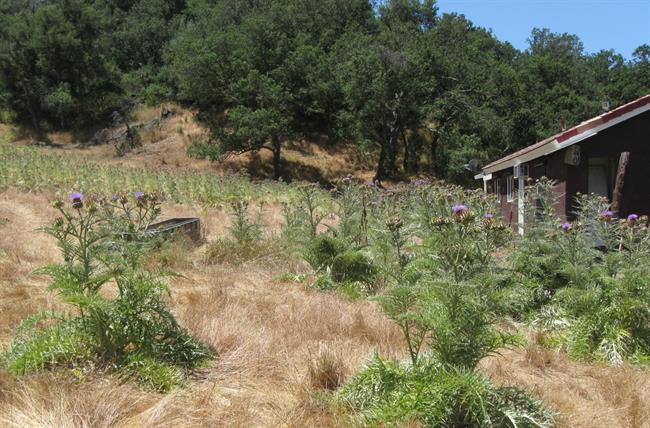
Artichoke Thistle - Cynara Cardunculus
Artichoke thistle is a state listed, aggressive noxious weed that infests much of Orange County. It has caused widespread damage to native plant communities and ecosystems and has rendered pockets of rangeland useless. It should be removed whenever possible to prevent further infestations. The plant stands 1-2 m in height and can be identified by large spiny leaves that form a rosette pattern. It displays large flowering heads with showy purple disk flowers. This extremely invasive perennial is commonly found on grasslands and hillsides. In late summer, it dies back and becomes a fire danger.
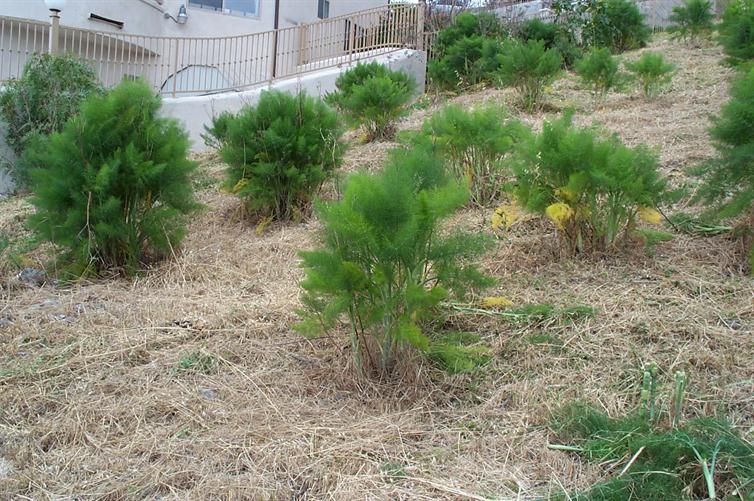
Wild Fennel - Foeniculum Vulgare
This wispy perennial is similar to the domesticated herb found in gardens. Wild fennel has a licorice-like smell. It can grow up to 8 feet high. In late summer, it dries out and becomes a fire danger.

Tree Tobacco - Nicotiana Glauca
Found in disturbed areas, this highly invasive perennial weed is quite toxic. It is usually spindly in appearance with bright yellow elongated flowers. If not removed when it is young, this weed will grow into a tree.
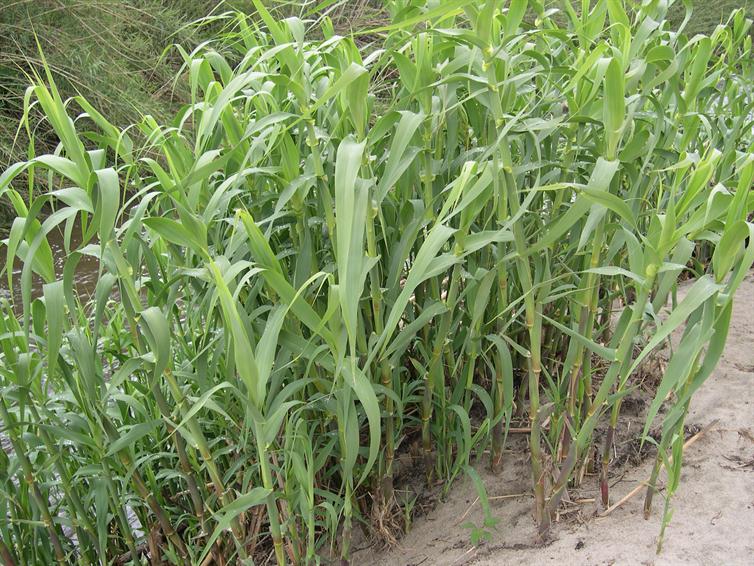
Giant Reed - Arundo Donax
This grass is one of the most invasive wildland pest plants known to California. It can grow more than 3 inches per day and can grow to over 20 feet tall. It is commonly found in riparian (creek) areas.
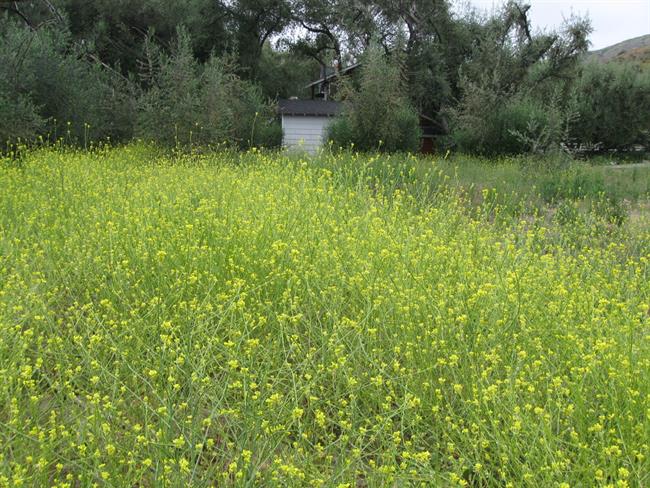
Summer Mustard - Hirschfeldia Incana & Black Mustard - Brassica Nigra
Mustard is an annual weed that is found on almost every undisturbed hillside and vacant lot in Orange County. It is easily identifiable by its many small bright yellow flowers. Once it has taken over a large area, it provides a beautiful carpet of yellow. However, as summer approaches, mustard plants quickly dry out and become a significant fire danger.
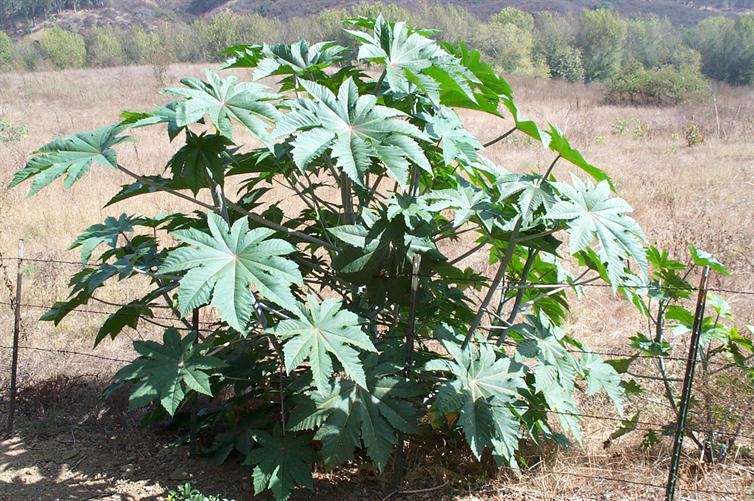
Castor Bean - Ricinus Communis
Native to East Africa, the castor bean plant has become naturalized to all of Southern California. It is very common along creeks, riverbeds, and just about any area with sufficient moisture to sustain its vigorous growth. It is easily identifiable by its large seeds. The plant is usually bunched with seeds about the size of a nickel. The plant will typically grow from 10 to 15 feet in height. Keep in mind that the seeds and beans are extremely poisonous! Keep children and pets away.
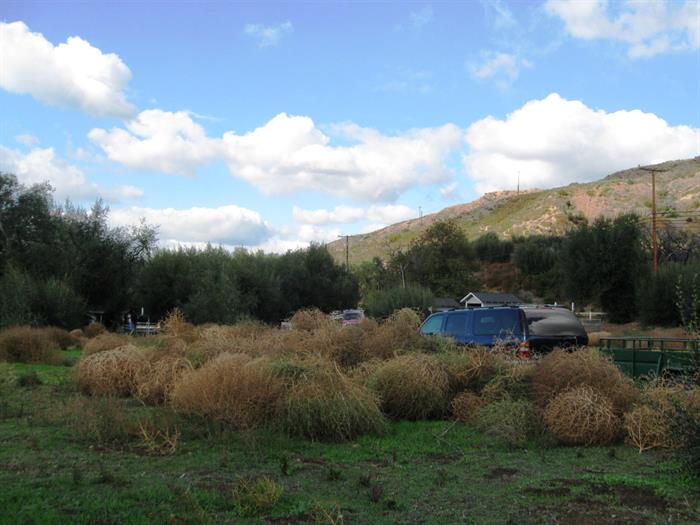
Russian Thistle (Tumbleweed) - Salsola Tragus
A rounded, bushy annual, it stands from ½ to 3 feet tall. It became common throughout the western United States in the late 19th century. It is mostly found on undisturbed and vacant lots.
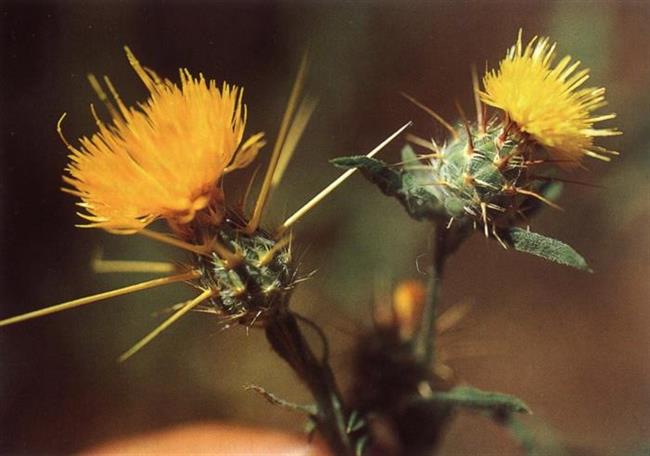
Yellow Star-thistle (left) - Centaurea Solstitialis & Tocalote (right) - Centaurea Melitensis
The Yellow Star-thistle's flowers (left) are generally displayed June-September. It is native to southern Europe and western Eurasia and was first collected in Oakland, California in 1869. It was most likely introduced after 1848 as a contaminant of alfalfa seed. Seed is transported in large amounts by road maintenance equipment and on the undercarriage of vehicles. It can also be spread by getting stuck in the coat of grazing animals. Yellow Star-thistle interferes with grazing and lowers yield and forage quality of rangelands, thus increasing the cost of managing livestock.
CAUTION: Long-term ingestion can cause a neurological disorder in horses (known as chewing disease). Tocalote (right) is a similar invasive species which is slowly spreading across Orange County. As you can see, the tocalote has shorter spines than the Yellow Star-thistle.